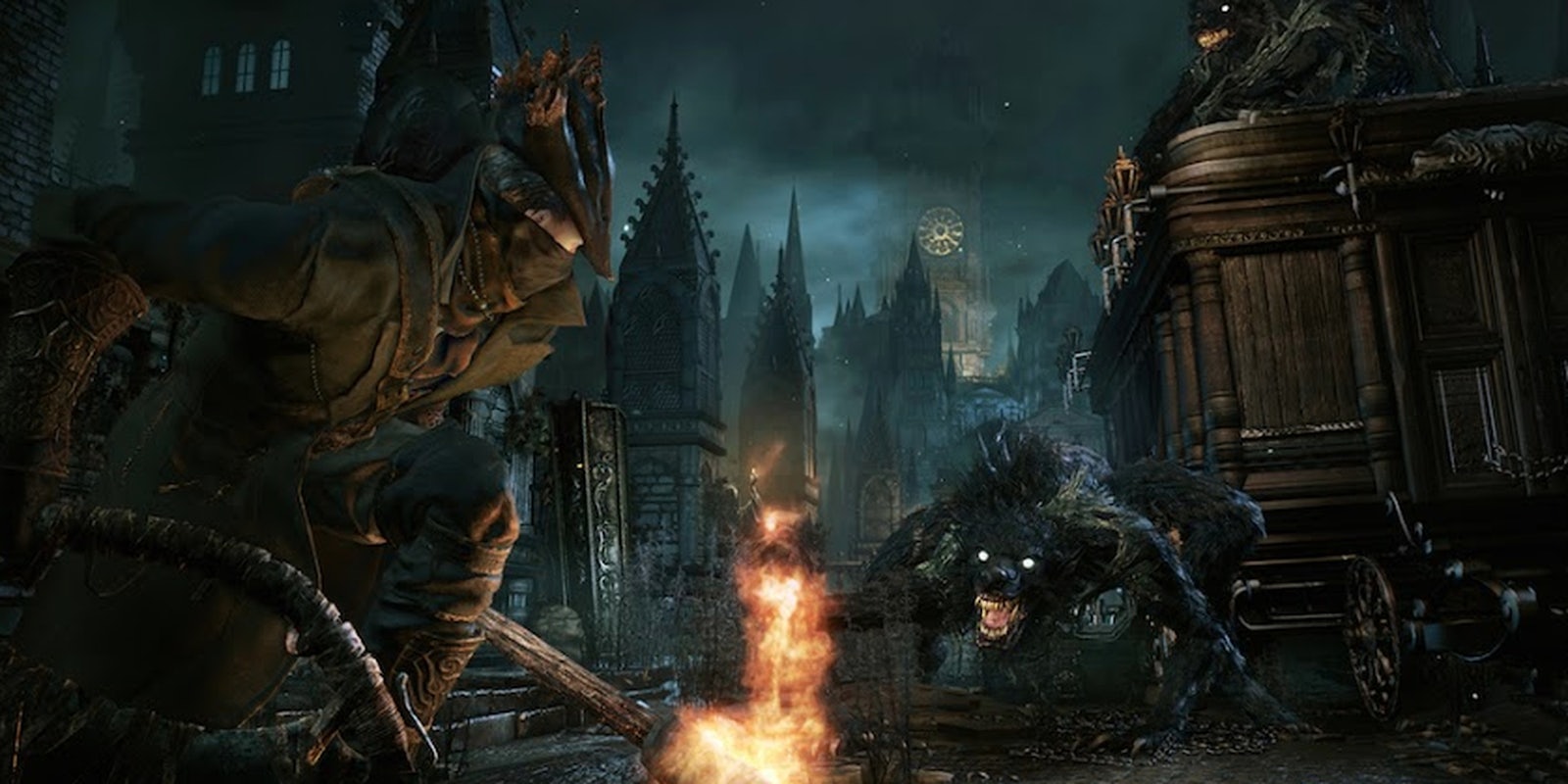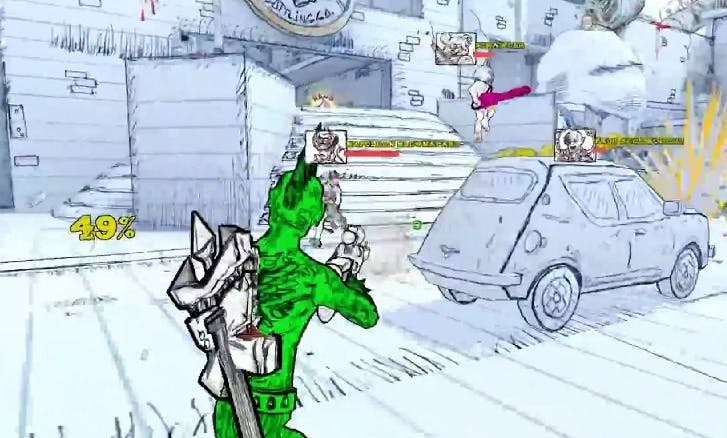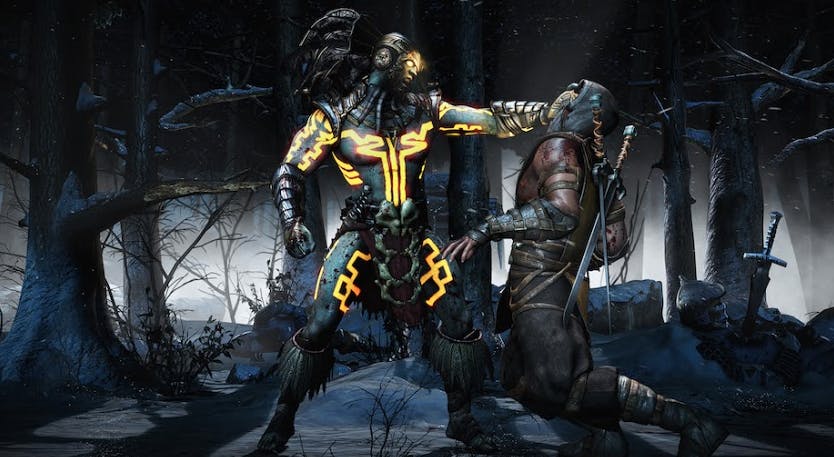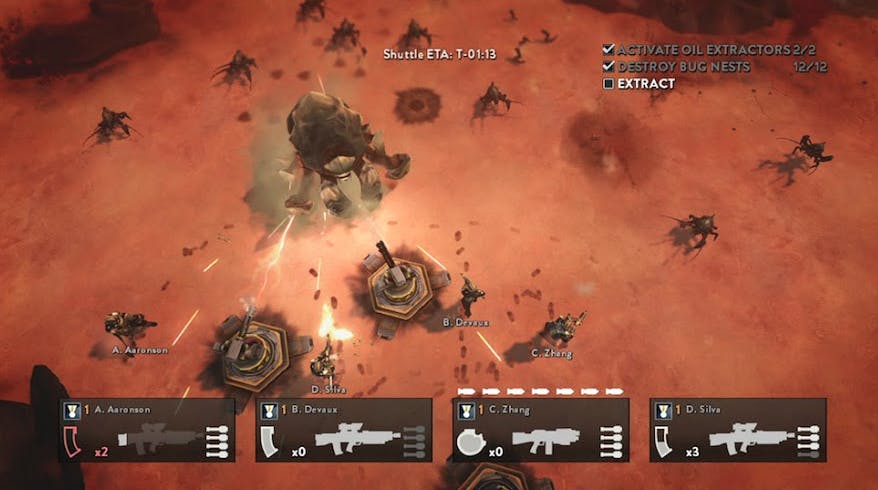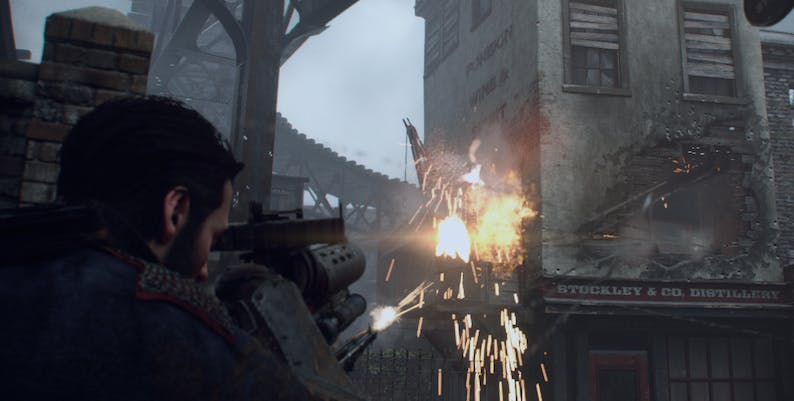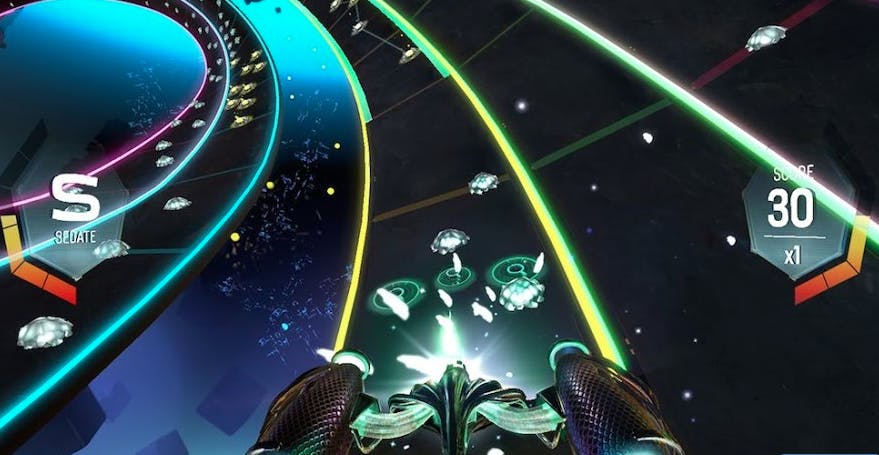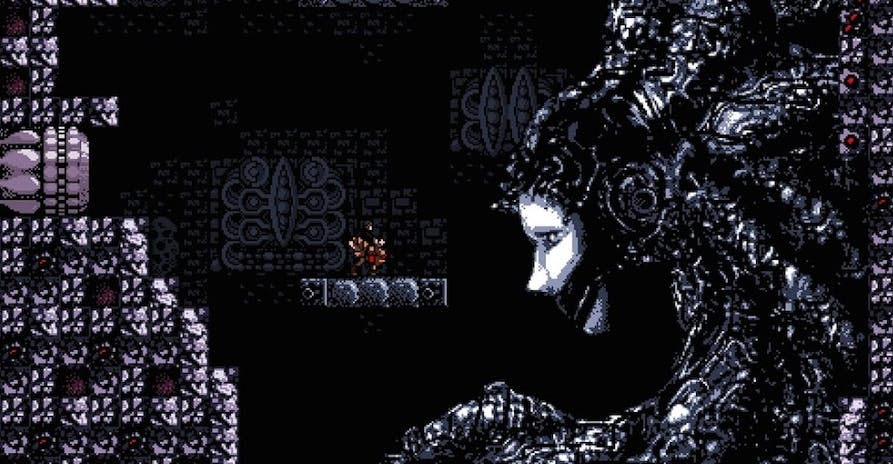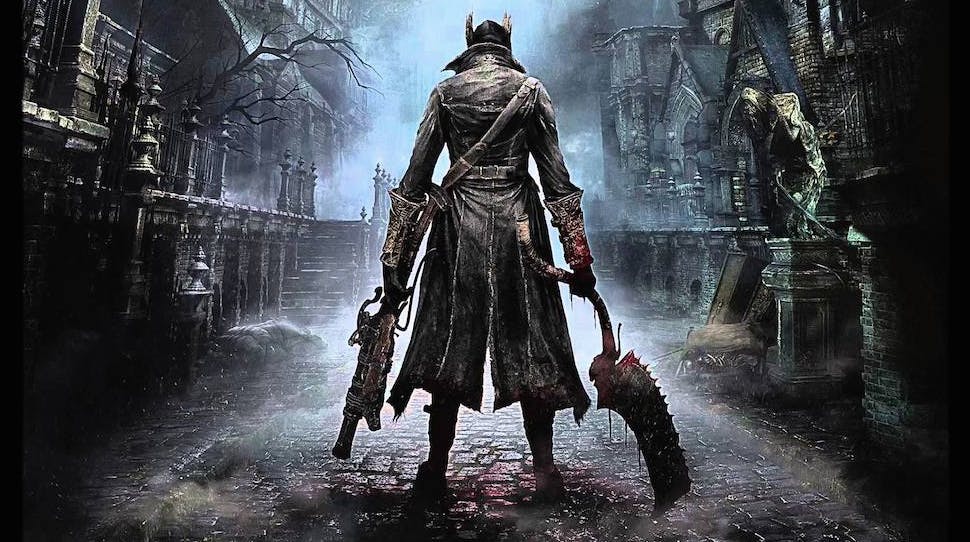BY MIGUEL CONCEPCION
As corny as it sounds, the unofficial theme of Sony Computer Entertainment’s inaugural PlayStation Experience community event was “Something for everyone.”
If you faced any direction while standing in the middle of the exhibitor hall last weekend, your field of view would include a diverse mix of recently released and upcoming games from studios of all sizes. Even if the Xbox One edged out the PlayStation 4 in post-Thanksgiving week sales, Sony looks more than prepared for 2015. The abundance of games by small studios is almost overwhelming, many fan-requested games are on their way (eg. Suikoden II, Yakuza 5), and we cannot wait to play Uncharted 4: A Thief’s End. For now, here are the top 12 games we tried out.
12) Drawn To Death
Between God of War and Twisted Metal, destruction and mayhem runs through David Jaffe’s veins, so it wasn’t a surprise that his next project was an adversarial multiplayer shooter titled Drawn To Death. What is surprising is its art style, inspired by high school notebook sketches. You know the look: improvised character designs befitting a graphic novel’s first draft with smatterings of color to fill in the whites of the notebook pages. If Drawn To Death’s art direction represents an adolescent’s notebook, its one where characters have been inspired from the fictional youth’s own life and family. That includes a visualized quote from his girlfriend as well as a soldier representing the doodler’s brother.
As Jaffe’s PlayStation Experience keynote showed, his appreciation for the livelihood Sony Computer Entertainment has provided him is equal to his high regard for his fanbase. So it made a great deal of sense that he would get PlayStation Experience attendees a chance to influence the design and development of Drawn To Death. Those who played the game at the expo concluded their session with a brief focus group with Jaffe and his team. There are few mediums more primed for imagination than a high schooler’s notebook, so it’s almost scary to think what the final version of Drawn To Death will be like.
11) Resident Evil: Revelations 2
After the bloated Resident Evil 6, the console version of Resident Evil: Revelations was an apt contrast, where the latter’s conciseness and focus beat out the blockbuster movie-inspired presentation of the latter. This poignant comparison wouldn’t have happened had it not been for the fact that Revelations originated as a Nintendo 3DS game, so Capcom was compelled to do more with less right from the start. Whatever multiplatform successes resulted from Revelations compelled the developer/publisher to produce a follow up, Resident Evil: Revelations 2. If there’s one thing Resident Evil 6 got right, it’s the even blend of new and old playable characters. For Revelations 2, we see the return of Claire Redfield, Barry Burton, and the introduction of Moira Burton, Barry’s daughter.
Perhaps inspired by the success of Telltale’s The Walking Dead or, more likely, Capcom’s experience with downloadable content, this sequel will be released in four episodes, each lasting two to three hours. You won’t have to wait long for each installment since Capcom is currently scheduled to release each episode one week after another. And yes, those of you who are fond of Resident Evil but aren’t day-one fans can wait for a complete version release after the final episode is out.
10) Mortal Kombat X
History was not repeated so much as it was altered in 2011’s Mortal Kombat reboot. Mortal Kombat X is a fitting complement for not being a “business as usual” sequel with just new characters and maps. First and foremost, Mortal Kombat X introduces a trio of move set variations, each one specially designed for each fighter. And when you have a franchise as long-running as Mortal Kombat, you’re bound to have fighters who are the offspring of well-known characters, like Cassie Cage, daughter of Johnny Cage and Sonya Blade.
After the last Mortal Kombat, developer NetherRealm Studios made the well-received Injustice: Gods Among Us. Unsurprisingly, that DC Comics fighter had an influence on Mortal Kombat X, just without the big budget production values and map-altering set piece destruction. Instead, every map and arena in Mortal Kombat X will have points of environmental interactivity. That can be a tree branch to execute a lethal swing or a throwable barrel to knock out your opponent. The last Mortal Kombat is as solid a training game as any to prepare for X, but you should be prepared for new changes in gameplay. If any studio knows the risks of a sequel maintaining the status quo versus introducing new features, it’s NetherRealm and its long time director and Mortal Kombat creator, Ed Boon.
9) Helldivers
My first brush with the dark side of cooperative play was during my early ‘90s playthroughs of Streets of Rage. I played with friends who didn’t understand the benefits of resource management, like passing on a health item because your buddy might need it more than you do. Helldivers is the natural evolution of the challenges of co-op play at its most unforgiving. This top-down shooter has the key feature that will test even the best of friendships: friendly fire. You cannot toggle off friendly fire.
Helldivers demands coordinated team actions, just not at the surgical level of tactical shooters like Rainbow Six. There’s just too much unpredictability and chaos that pre-planning can only get you so far. It’s a game that not only rewards teamwork, but also being able to adapt and act on the fly. The opportunities to prepare are limited because Helldivers’ open world levels are procedurally generated. Yet, you and your team have to make a choice even before you begin a sortie, namely the decision on where to land your drop pod. Is your squad a bunch of risk takers who’ll drop near an objective even if it means heavy resistance, or will you play more conservatively and land much further away from your goal so you can potentially avoid enemies?
8) Keep talking and nobody explodes
“What do you see?” That is always the first question you hear whenever someone in a movie has the unfortunate task of disarming a bomb and the bomb specialist is too far away to shut down the device himself. It’s odd to think that no game has ever captured that experience until now. Keep Talking and Nobody Explodes is not only a game for Sony’s Project Morpheus VR headset, but it also has a profoundly nostalgia-inducing analog component that echoes many late ‘80s/early ‘90s PC games.
While one player dons the headset and is tasked with disarming the bomb, another is leafing through a binder of notes that will provide exact solutions on how to disarm a given bomb. The person with the bomb has to describe components well enough for the partner to find the corresponding parts in the binder. It could be a series of lights, a trio of switches, or a classic pair of colored wires. Only the binder will tell you what should be moved, flicked, cut, or left alone.
It should also be noted that the game’s developer, Steel Crate Games, hasn’t settled on the binder as the final design for the bomb solving document.
7) The Order: 1886
The Order: 1886 stars heroes from Arthurian legend working as special operations agent in Victorian era London. Add some early 20th-century gadgetry and fabled monsters and you have a jumble of influences that makes you wonder how its developer, Ready At Dawn, will deliver a cohesive package. Based on what I’ve played to date—close to an hour’s worth of combined content—I can’t help but feel optimistic they’ll succeed.
So far I’ve played sections with reaction-intensive quick time events, tense sneaking objectives and pulse-quickening cover-based shooting. The question is—provided these are the three dominant gameplay components—will there be an equal balance of all three experiences when The Order: 1886 comes out early next year?
6) Galak-Z: The Dimensional
Do you know there’s an anime term for the gratuitous and simultaneous launch of missiles from a fighter plane or spaceship? It’s known as the Itano Circus, named after Ichiro Itano, the animator credited with this style of animation, where missiles not only fill your TV screen but also never fly in straight lines. Galak-Z not only emulates the Itano Circus, but old school sci-fi anime in general, right down to the ship launching from a long and narrow tunnel. Itano is best associated with the Super Dimensional Fortress Macross series. The subtitle of Galak-Z is The Dimensional. Coincidence?
Originally conceived as a more structured, story-driven space shooter, Galak-Z has evolved in a more intriguing roguelike adventure with procedurally generated levels. Taking a page from another roguelike, Don’t Starve, Galak-Z rewards and encourages planning many steps ahead. What’s equally compelling is that it will still maintain a solid story progression with an episodic anime-inspired presentation.
5) Amplitude
Younger players who only know Harmonix through the studio’s Rock Band series might have gotten a taste of Amplitude’s fundamental gameplay through 2012’s Rock Band Blitz. If you can follow notes on a Harmonix music track and can switch between multiple tracks, then you’re more than halfway to having the aptitude for Amplitude. It’s a return to Harmonix’s roots right down to the spaceship and adversarial multiplayer. And as fans of the original game will tell you, Amplitude is a game of compounding success, where performing well creates layered scoring opportunities driven by a multiplier. The challenge not only comes from hitting the notes in succession but also in knowing how to multitask between the musical train tracks.
The other reason to celebrate the return of Amplitude is that we finally have another Harmonix-developed game with a strong electronic dance music playlist. While I was unfamiliar with the new tracks, they were nonetheless immediately infectious and worth playing loud. Expect a song library by artists from the original game as well as musicians like Anamanaguchi and Jim Guthrie, not to mention compositions by Harmonix’s in-house musicians. When I find myself unconsciously bobbing my head to the beat to a song I haven’t heard before and still manage to score well, I know I’m playing something special.
4) Grim Fandango Remastered
Of the myriad ports and remasters we see on a monthly basis, no re-release announcement in the last few months has been as positively received as Grim Fandango’s resurrection and makeover. Double Fine could have attempted a full remake or a sequel, but it made the wise and sensible choice to go with what fans loved and remembered fondly. Partly funded with the assistance of Sony Computer Entertainment (all but ensuring that this won’t come out on Microsoft Xbox or Nintendo platforms), Grim Fandango Remastered looks to recapture the charm and humor of the original 1998 release while also sporting cleaner textures and a full orchestrated soundtrack.
3) Axiom Verge
If the last few years are any indication, it’s easier to create a 2D adventure game inspired by its 8- and 16-bit forbearers than it is to develop a game that could be mistaken as something that came out 25 years ago.Coder/artist/musician/designer Tom Happ, meanwhile, is turning the genre on its head with his game, Axiom Verge. Happ believes that game rules can be broken just as easily as game walls. It helps that Axiom Verge has weapons like a laser drill that lets you break these barriers. It promises to be a robust trek, with 40 weapons and tools to find and 70 different types of enemies, many of whom will feel familiar and new at the same time. Don’t be surprised if your inner 8 year old manages to instinctually figure out strategies to some of the greater enemies without losing a life.
This Metroid/Castlevania-inspired adventure respects your knowledge and reverence for the 2D space while also making you rethink the very nature of 2D exploration. That means manipulating glitches (that Happ intentionally designed) in order to progress further in the game or better yet, find a secret room or two.
2) Shovel Knight
Not since the days of the SNES and Genesis have we seen this many 2D action-adventure games. If you’ve been away from this genre for a while, there’s no better re-entry point than Shovel Knight, which is getting a three-prong release on PS4, PS3, and Vita next year. Its developer, Yacht Club Games, is keenly aware of the power of nostalgia. You feel the refined gameplay and level design of classics from Mega Man to Ninja Gaiden in every pixel of Shovel Knight. It pays respect to that 8-bit era while managing to carve an identity all its own.
Not that any fan needs an excuse to replay Shovel Knight, but the PlayStation-exclusive appearance of God of War’s Kratos does sweeten the deal.
1) Bloodborne
For as much as we know and experienced first hand about Bloodborne, Sony has done a fine job showing just enough to maintain our excitement without spoiling the experience any further. With its release only a couple months away, Sony doesn’t really need to give us much else, especially knowing that this is being helmed by the revered Hidetaka Miyazaki, creator of the Souls franchise. You wouldn’t find much debate classifying Bloodborne as a successor to the Souls series since much of the gameplay is nearly identical, right down to the merciless brutality of its enemies, big and small.
Victorian-era London has been fertile source material for creators looking for a setting with pre-20th century urban decay, poorly-lit streets, and alleys filled with murders and beggars. That influence is pervasive in Bloodborne, from the spires to the raggedy mobs holding torches and pitchforks on the streets below. Yet Bloodborne isn’t set in London because not even that city in the 1800’s was as dark and gothic as the world Miyazaki and his art department have envisioned.
Screengrab via sonyplaystation/YouTube

